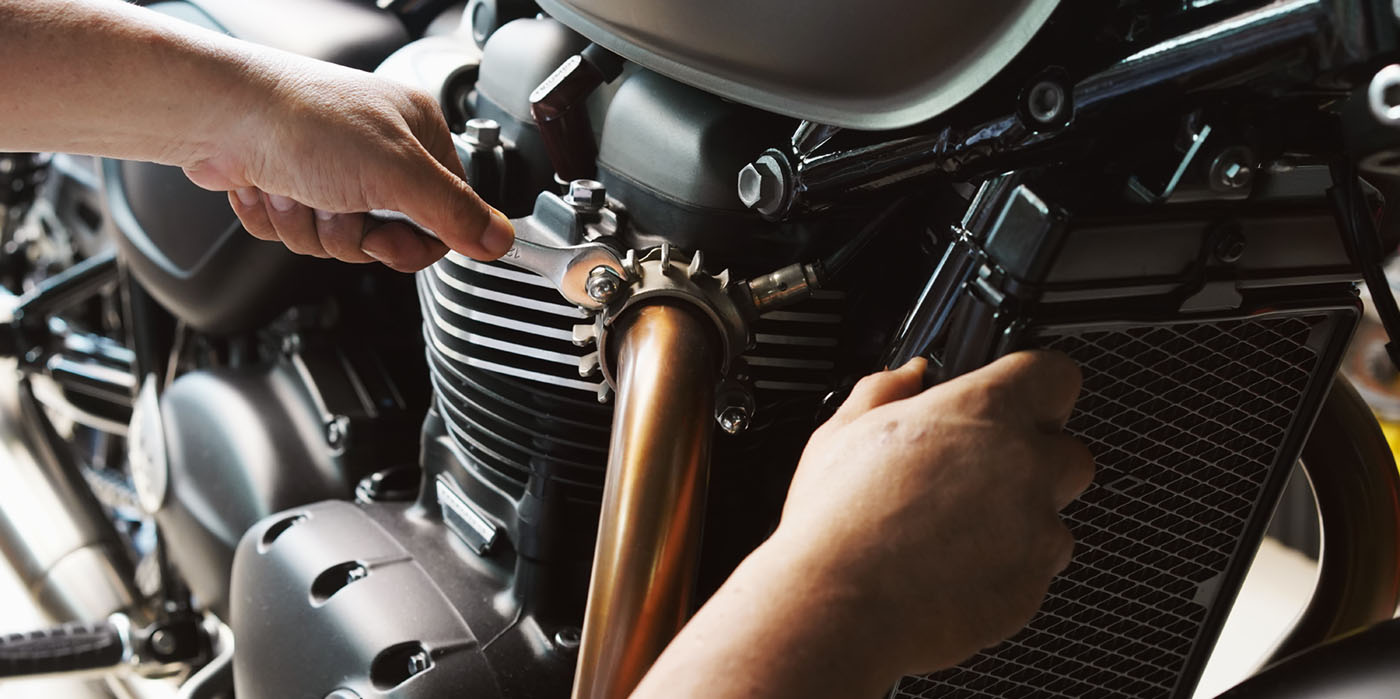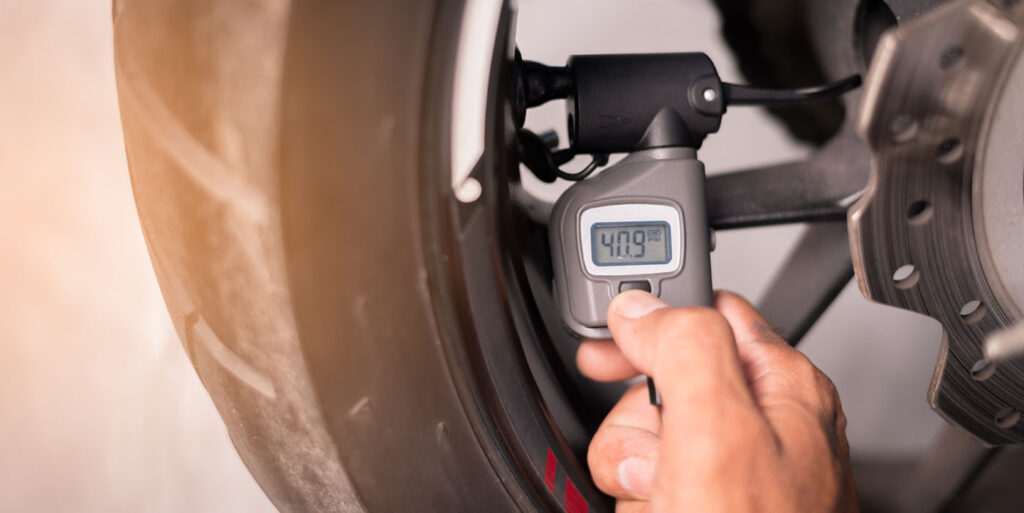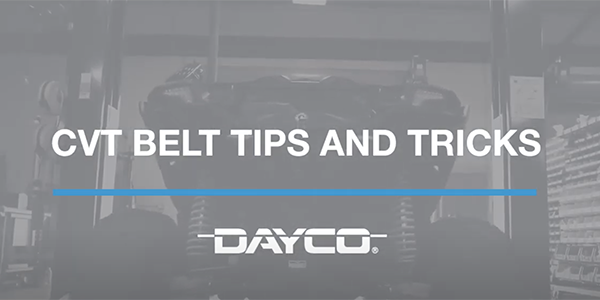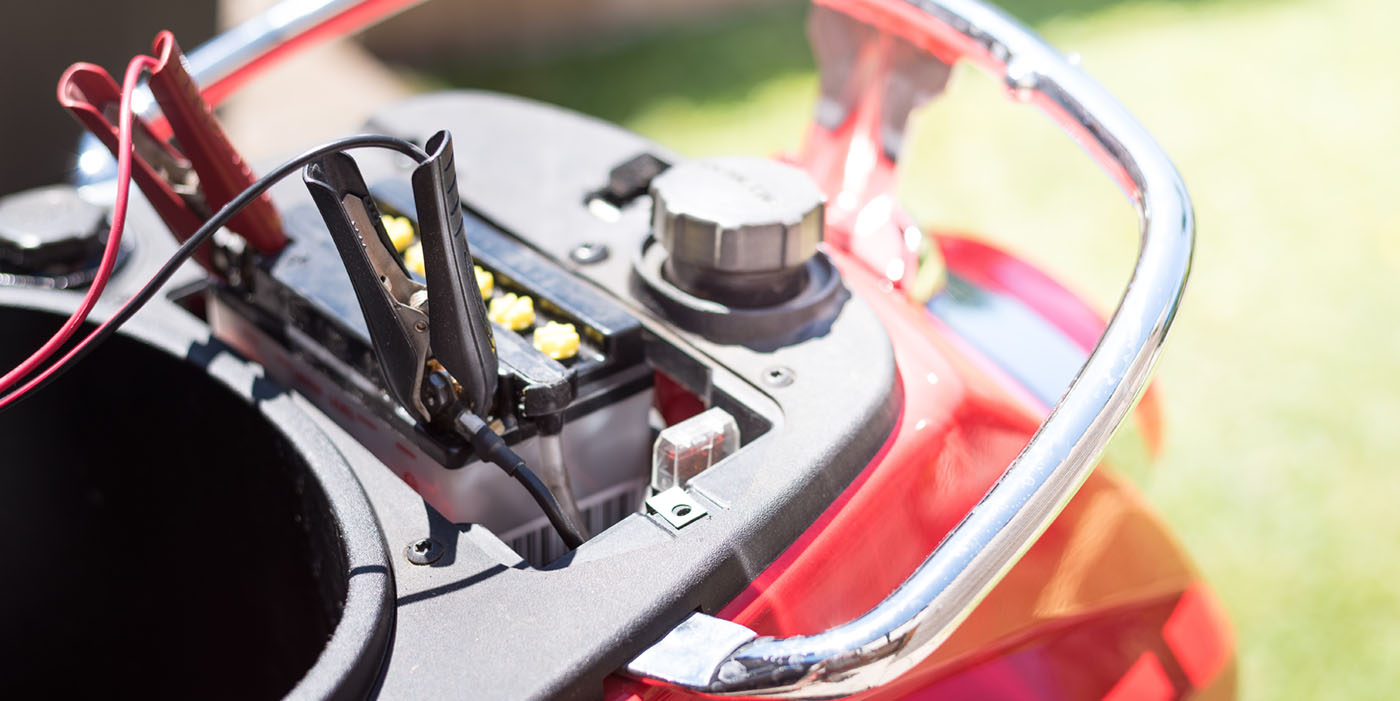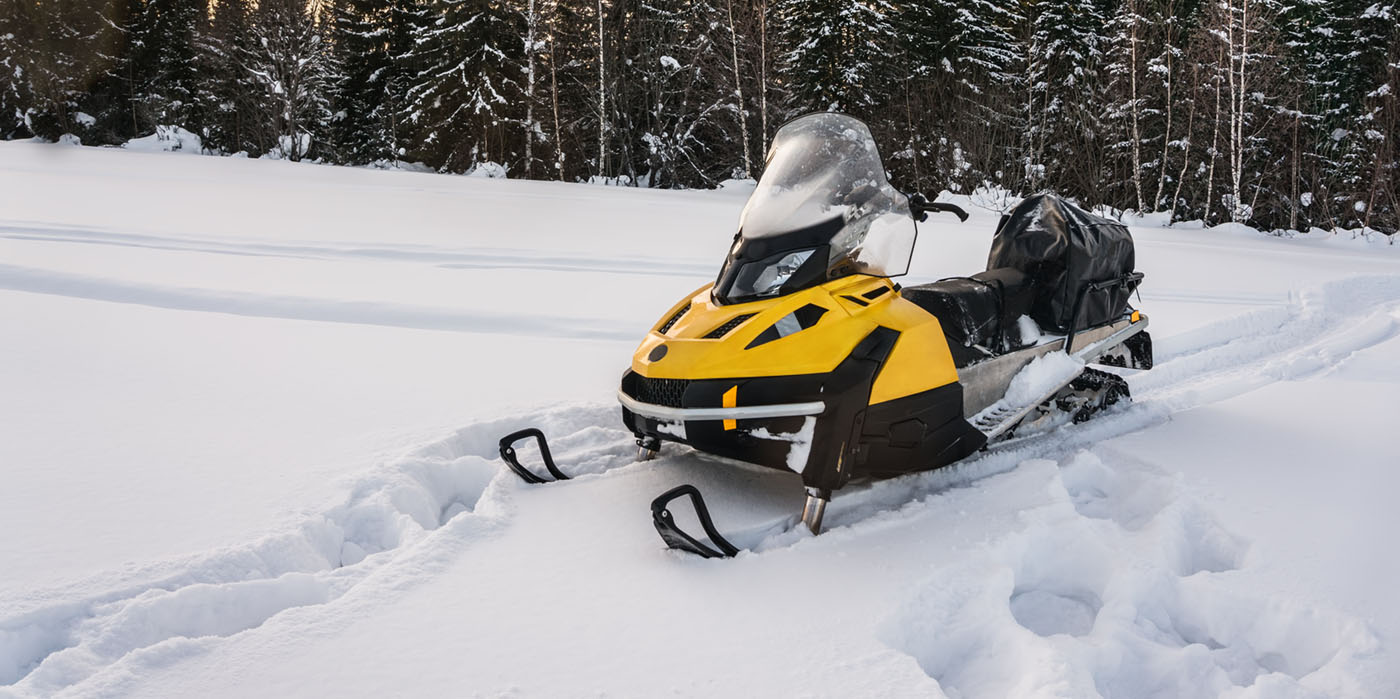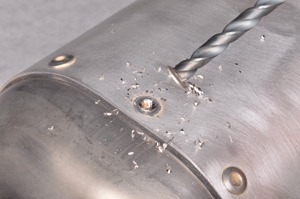
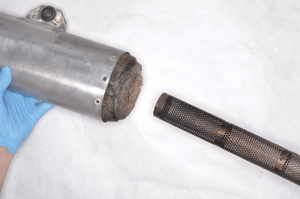
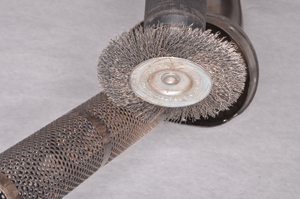

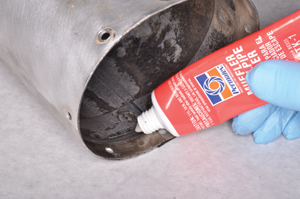
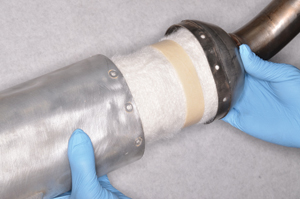
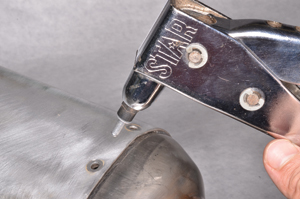
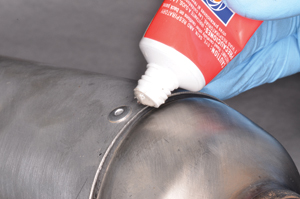
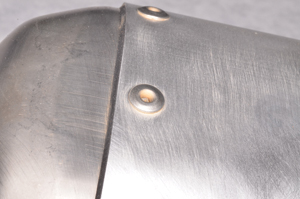 Back when two-strokes were king, repacking mufflers was a standard maintenance job. A four-stroke muffler will not get saturated with unburned oil like a two-stoke, but the muffler material needs to be refreshed when the exhaust noise increases and power lags.
Back when two-strokes were king, repacking mufflers was a standard maintenance job. A four-stroke muffler will not get saturated with unburned oil like a two-stoke, but the muffler material needs to be refreshed when the exhaust noise increases and power lags.
The first step in muffler repacking is to open it up and remove the old packing material. Where two-strokes often have bolt-on caps, four-strokes usually have rivets. Do not fear the rivets! A riveted four-stroke muffler often can be easier to deal with than a gummed up two-stroke.
On a stock muffler, be sure to check with a service manual to see if the front or the rear cap rivets should be removed. For aftermarket pipes, check with the manufacturer. The photos in this guide are from the Cyclepedia.com Online Service Manual for the YZ250F and show the stock muffler. On this model, the rivets on the engine side of the canister must be removed.
Step 1: Take care when removing the rivets with a drill bit. The drill bit must only take off the head of the rivet without widening the holes of the muffler body and cap. Push the remaining parts of the rivets through with a punch to free the cap from the muffler body.
Step 2: Separate the cap and canister. Discard the old packing material.
Step 3: Remove the muffler core if it is a separate piece. Clean the core and/or the spark arrestor with a wire brush to remove excessive carbon build up.
Step 4: Wrap the new muffler packing around the core evenly. The muffler packing should be snug, but not overly tight. Use two pieces of ½-inch masking tape to secure the packing to the core.
Step 5: When the muffler cap is joined to the canister, a heat resistant muffler sealant will be needed to prevent exhaust leaks. Apply the muffler sealant to the inside surface where the cap will sit against the body.
Step 6: Assemble the muffler with the new packing material. Do not allow the packing material to be pushed around and bunch up.
Step 7: Install new rivets to secure the cap to the canister. A quality rivet gun will make your job much easier. If the muffler uses fasteners of another type, install them and tighten them as specified.
Step 8: With the cap securely joined to the canister, run a small bead of muffler sealant around the edge of the cap where it fits against the canister.
Step 9: Wipe away the excess sealant with a damp shop rag or clean it away as indicated.
If you thump the side of a well packed muffler, you should hear a soft thud. A sharp empty sound indicates the packing is burned up or blown out. Keeping the muffler packing fresh will make the machine perform and sound the way it should from the factory.
Brought to you by the people at WWW.CYCLEPEDIA.COM, Cyclepedia Press LLC painstakingly publishes online service manuals for many popular ATVs, motorcycles and scooters. Our full-color, online product is the first of its kind in the powersports industry. We provide our customers with service information now, not in 3-5 days shipping time. Our time and money saving, online manuals are a great compliment to an Authorized Factory Service Manual.



